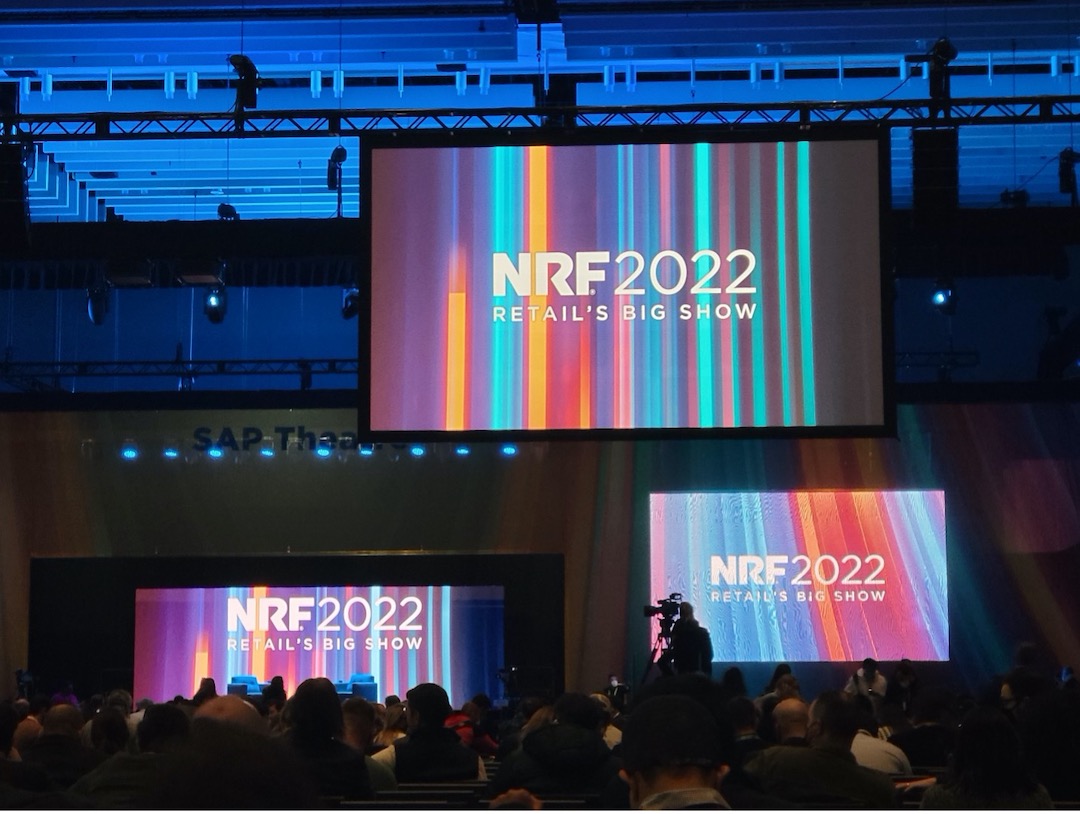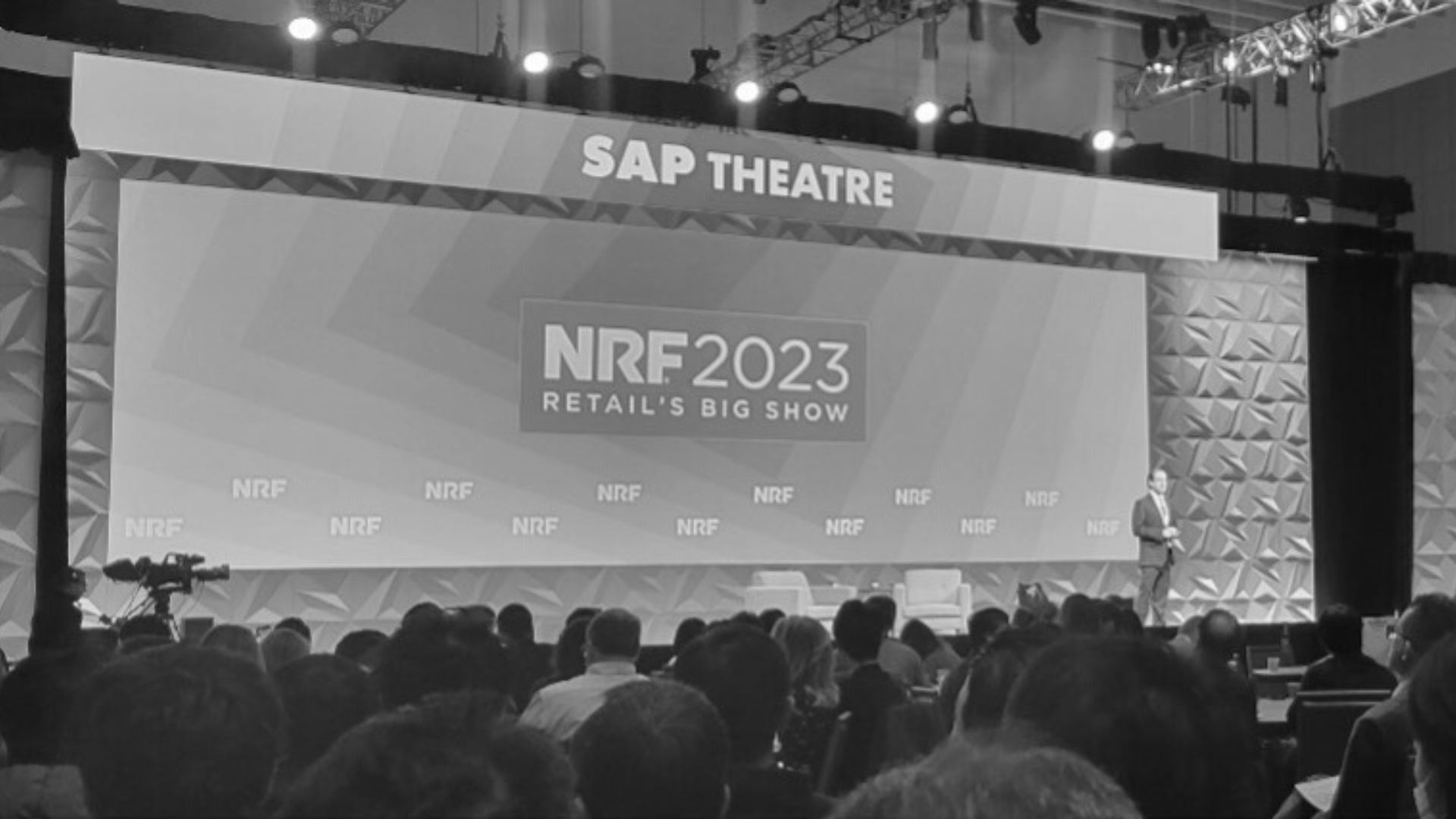I picked my eight-year-old daughter up from a playdate the evening before I departed for NRF 2022, “Retail’s Big Show.” As they were parting ways, my kiddo and her friend exchanged avatar information. When I asked her buddy why she had decided to go with an avatar that is a mustachioed man in a Hawaiian shirt, she said it’s because “the girl avatar clothes are more expensive than the boys’.” We both thought that was pretty bunk.

A prescient exchange
Little did I realize that I had just received a primer on the Direct-to-Avatar Economy, part of the metaverse, which is poised to reshape the way we work and live (much the way social media did in the ‘90s). My tutors? A pair of “Alphas,” who at 0-12 years of age will be the first generation to come of age during “The Wander Years,” roaming a social virtual space where apparently they will prefer digital goods over physical goods (like clothes and accessories for their avatars). This is where (their avatars) will date, attend concerts, and more – as the environments become more immersive and those with “Reality Privilege” will be able to experience an “Extended Reality.” Think I’m nuts? Well, you won’t for long.
This space was the talk of NRF; each session on the topic was standing room only. Brand standouts included Nikeland (a Roblox location inspired by the brand’s HQ); Forever 21 (where users can design and run their own retail footprint); Ralph Lauren’s work in Roblox and Zepeto and P&G’s “Beautysphere.”
Implications: begin to explore the metaverse, both for your products and your employees. It might make sense to invest in parcels of virtual real estate to one day build a store or office. Or, perhaps your current creative can be made “phygital” (i.e., a blend of physical and digital) like a billboard that offers people the chance to unlock a virtual world as they walk past.
You might be thinking, “Wait, can we go back to the part about ‘Alphas’? I thought marketers were focused on GenZ – what gives?”
I overheard someone at the conference say, “You guys – GenZ is old now. They’re, like, 22.” After I spit out my coffee, I understood the intent of the comment. Born in 1997, GenZers are not “old,” but they ARE beginning to focus on “old people stuff,” like paying off student loans, furnishing homes and thrifting. (The latter is part of the generation’s focus on sustainability and circular economies.) Meagan Loyst led co-led an eye-opening discussion about her generation and her company, Gen Z VCs.
Implication: revisit your GenZ approach; is your brand empathizing with their life stage, or are you still treating them like high school students? Are there opportunities for your brand to offer platforms for your shoppers to exchange slightly used goods, or are you sending that business to third-party thrifting sites? Brands are thinking through how to offer shoppers an alternative to online marketplaces and how they can reap the benefits directly.
Speaking of sustainability, it’s the one thing all retailers can agree on
The Retail sector is notorious for being fiercely competitive, but it was clear that the one space everyone agrees on is that society must work together to address environmental concerns. Whether it’s pledging shared net-zero commitments or installing LED light bulbs in stores, the call from leaders is clear: we’re in this together and each person – and organization — must do our part.
Implications: benchmark current ESG commitments and see where they can be up-leveled; are there partners that could supercharge the efforts? Where are there opportunities to better communicate your goals, so you can find and work with like-minded allies?
The three other key NRF buzzwords? Agility, flexibility and loyalty
Many sessions focused on about being flexible and doing the best possible job to meet ever-changing (and ever-increasing) shopper needs. As the Chewy CEO said, he encourages his team to focus on “Working backwards from what consumers need.” From making brick-and-mortar experiences more immersive to improving delivery times to personalizing BOPIS, Retailers are keenly focused on listening and responding (with record speed) to what the market wants.
Implications: as the old saying goes, “There’s no such thing as consumer loyalty. Consumers just haven’t found something better yet.” Think about how your organization is delivering that “something better.” How/are you listening – and responding – to what consumers need? Where are there opportunities to better communicate how your brand is stepping up its game for consumers?
Who knew that Data and Demand Planning would be 2022’s most attractive couple?
Move over, Bennifer. The only duo NRF attendees wanted to talk about was the hot combination of data and demand planning. Attendees are squarely focused on how to use AI to solve for those ever-changing consumer wants. Many experts spoke to how they use a set of complex algorithms to model different scenarios – and all have a real human gut-check those assumptions. As Daragh Sibley, Director, Data Science at StitchFix, put it, “Humans and computers are better together.”
Implication: Naturally, there is no escaping supply chain and inflationary challenges for retailers right now. Focus on what’s within the organization’s control – i.e., managing the issues in an educated fashion and getting the best, cleanest and most robust data to guide decisions.
The other supply chain: talent
Retail is the “Largest private sector employer in America,” as NRF President Matt Shay repeatedly reminded attendees. Hence, the talent needs of the industry range widely – from brands scrambling for AR talent to build their metaverses (many speakers made an open plea for developers to join their organization) to those looking for ways to better retain frontline associates. I was really struck by Rachel Carlson at Guild, who said that employers have to offer “3Ps”: pay, purpose and paths. While the industry has largely focused on the first two (pay and the brand’s purpose), less focus has been given to offering associates a clear career path at the company. Mentorship and coaching are keys that are unlocking tons of opportunities for employers to retain – and upskill talent.
I was similarly impressed by the team at OneTen whose mission to upskill talent is off to an incredible start. In their first year, they’ve had 60 company signatories, all committing to support the ten-year plan to help deliver “family sustaining jobs” to millions of Americans without classic four-year degrees (but with a substantial skillset).
DEI content was frequently shared by session speakers, a clear focus for the participating organizations. (I’d encourage NRF to put DEI on the “main stage” in 2023 as the first-ever Equality Lounge was located on the basement level, in the corner furthest away from where the keynotes were held.)
Implication: put your talent needs front and center. Really consider – have you effectively communicated them not just externally, but internally as well? It was shared that one large retailer, while on the hunt for “cyber talent,” analyzed the backgrounds of their current store employees and found five THOUSAND candidates that had baseline skills that they could groom for corporate positions. Who knows — the answer to your staffing woes might be … your staff.
Was it weird? Was it safe? What did you THINK?
These are the three questions I’ve gotten the most about the show. Short answers: yes, yes and I learned a lot. Longer answers: it did feel strange to attend a convention, in New York City, after all we’ve been through. There were several sessions where the moderator spoke from a chair alone on stage to a guest on a video link. (It was kind of like watching a Zoom call with thousands of other people, but we were all in the same room. So, yeah – it definitely didn’t feel “normal.”) That said, I was heartened by all the safety procedures that were in place (diligent mask-wearing, mass vaccination checks, etc.) and it’s clear that the NRF worked their tail off to deliver the show. As a result, attendees benefitted by learning a great deal about the massive changes that are underway.
If you’d like to hear more about the Retail trends shaping the future of your brand or organization, let’s connect: [email protected].



